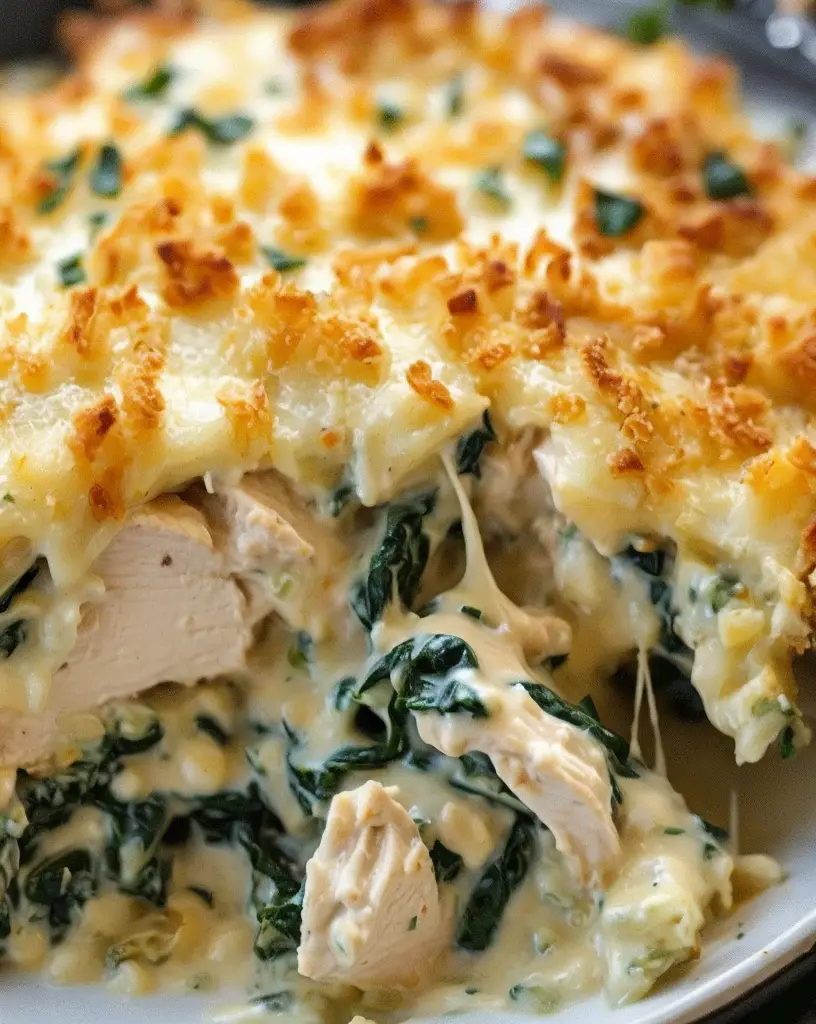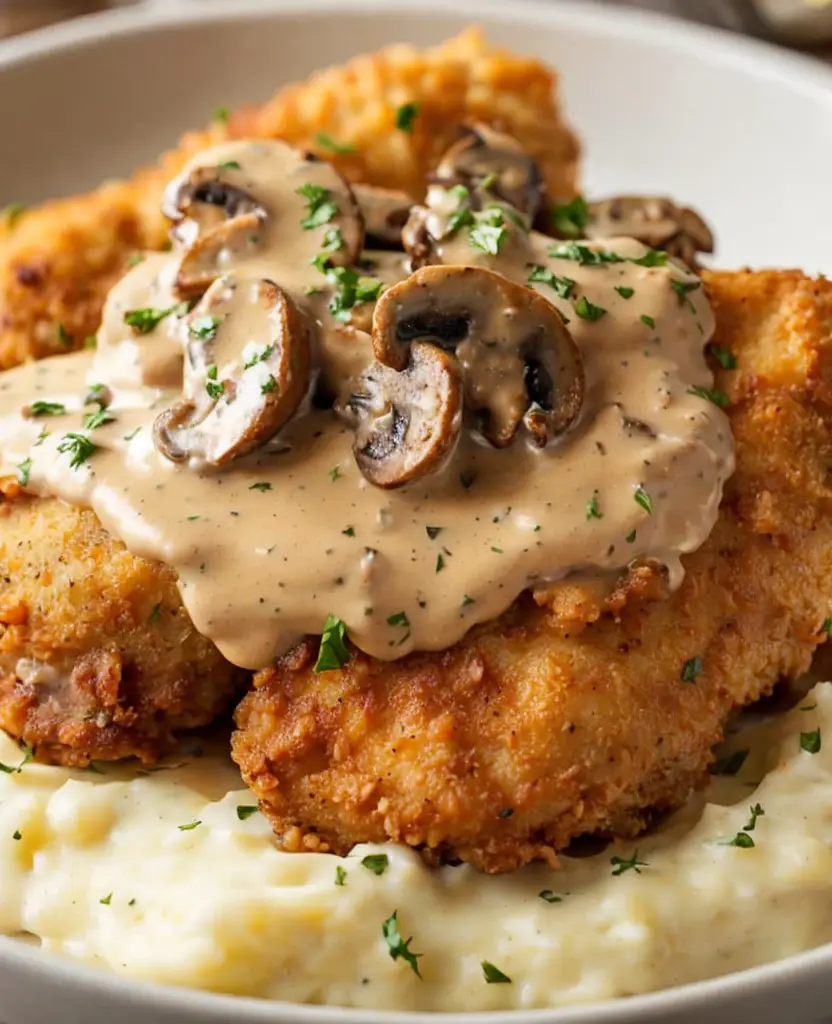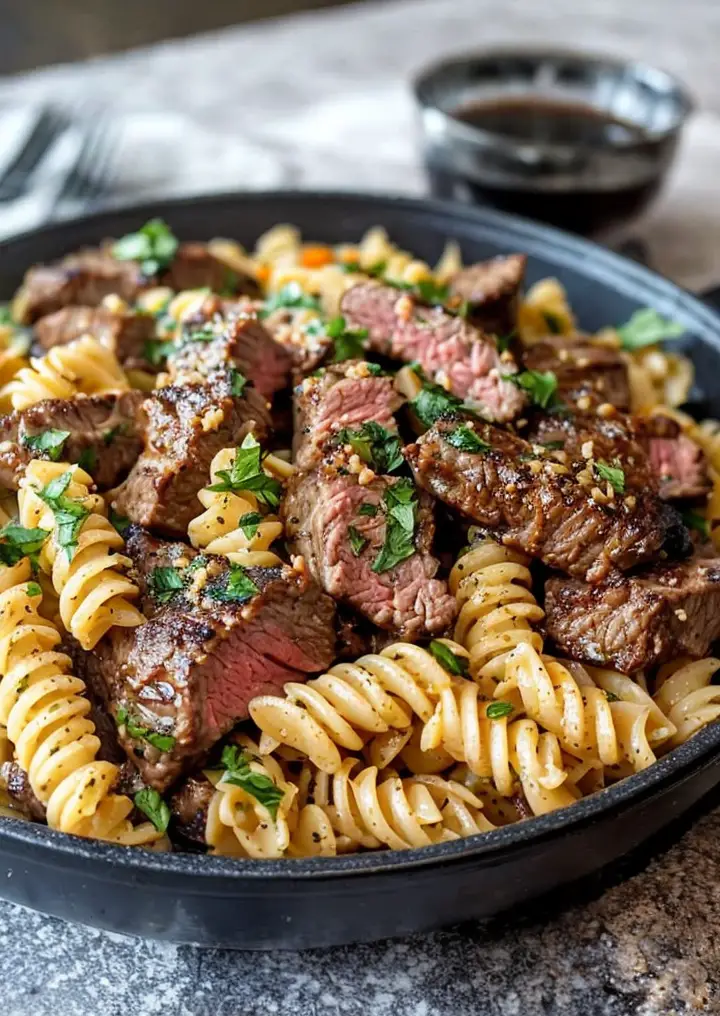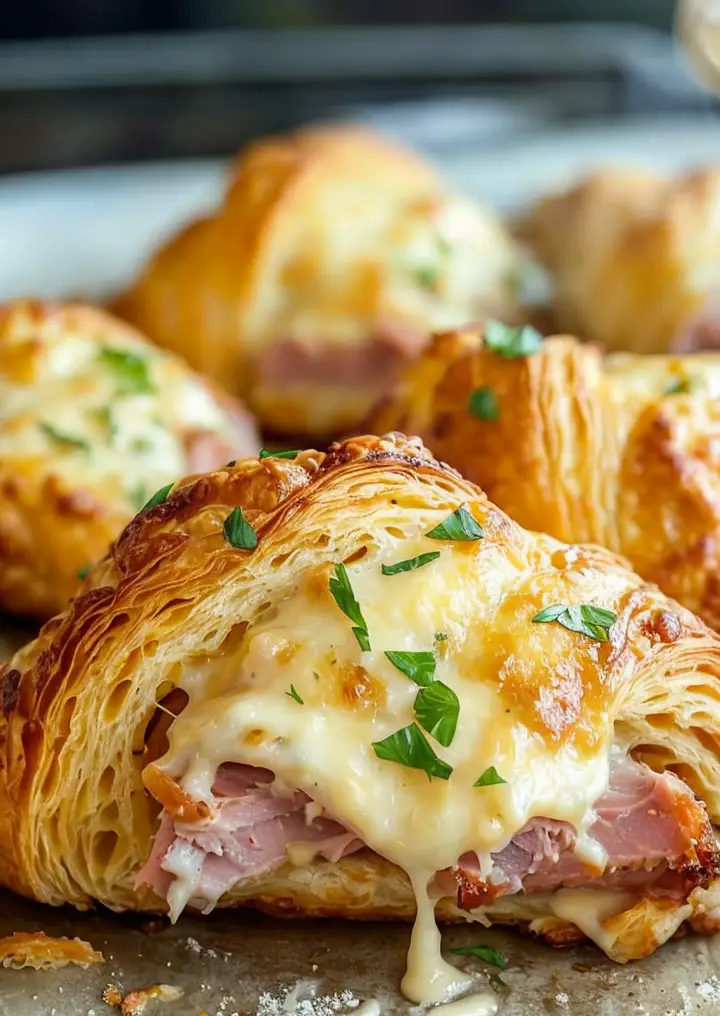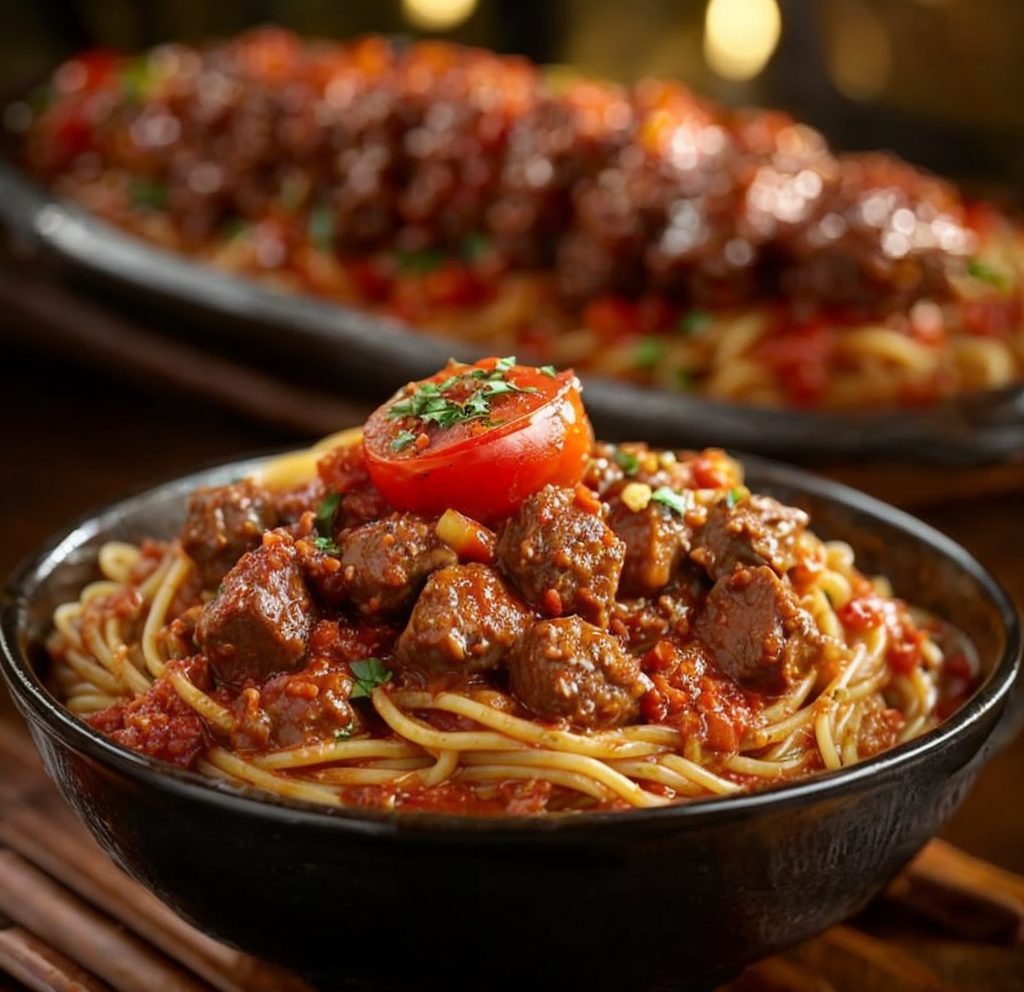Delicious Fried Green Tomatoes with Cajun Remoulade: A Southern Classic
The crisp, golden exterior of Fried Green Tomatoes contrasts beautifully with their succulent, slightly tangy flesh. This traditional Southern dish boasts a whimsical charm that reflects the heart of Southern cooking. The tomatoes are perfectly battered and fried, resulting in a texture that is both crunchy and tender. Paired with a zesty Cajun remoulade, the flavors blend to create a mouthwatering experience that will leave you wanting more.
Fried Green Tomatoes with Cajun Remoulade isn’t just another fried dish; it’s a timeless recipe that resonates deeply with those who savor every bite. Imagine sitting on a porch during a balmy Southern evening, indulging in crispy, flavorful tomatoes along with family and friends. This dish evokes not only nostalgia but also a sense of community and togetherness, making it an exquisite choice for gatherings.
Quick Recipe Highlights
- Flavor Profile: The Fried Green Tomatoes are savory and slightly tangy, while the Cajun remoulade offers a spicy, creamy kick that elevates the dish.
- Texture: The dish features a satisfying crunch on the outside, with a soft and slightly juicy inside, creating a delightful mouthfeel.
- Aroma: Expect enticing aromas of frying cornmeal and spices, enhanced by the fresh herbs and seasonings in the remoulade.
- Visual Appeal: The vibrant green tomatoes highlighted against the golden batter create a tempting presentation that is as pleasing to the eye as it is to the palate.
- Skill Level Needed: With a few cooking techniques, this recipe is approachable yet rewarding, making it suitable for both novice and experienced cooks.
- Special Equipment: A frying pan or deep fryer is needed along with basic kitchen utensils for coating and flipping the tomatoes.
Recipe Overview
- Difficulty Level: This recipe is rated medium due to the careful technique involved in frying, ensuring the tomatoes are cooked through and perfectly crispy.
- Category: Fried Green Tomatoes serve well as an appetizer, snack, or side dish, making them versatile for any meal.
- Cuisine: Rooted in Southern cuisine, this dish showcases the region’s love for deeply flavorful and comforting foods, with Cajun influences adding a distinctive twist.
- Cost: Ingredients are relatively inexpensive, with fresh tomatoes, flour, and spices, making this a budget-friendly choice.
- Season: Summer is the best season for making this dish, as green tomatoes are most abundant and flavorful during their peak harvest.
- Occasion: Perfect for picnics, barbecues, or any outdoor gathering, Fried Green Tomatoes bring a touch of joy and celebration to your table.
Why You’ll Love This Recipe
Fried Green Tomatoes with Cajun Remoulade tantalize your taste buds with their mouthwatering flavor combination. The contrast between the crunch of the fried batter and the well-seasoned tomato creates a satisfying bite that resonates with comfort food lovers. The spiciness of the remoulade adds a layer of excitement, making each mouthful a delightful experience.
Convenience is another appeal of this recipe; cooking Fried Green Tomatoes is a straightforward process that can be completed in under an hour. You can slice, batter, and fry, allowing you to impress your guests with minimal effort. This makes it an excellent choice for an impromptu gathering or weeknight dinner, ensuring that fresh Southern flavors are just a fry away.
Nutritionally, green tomatoes are rich in vitamins A and C, providing antioxidant benefits while being low in calories. The remoulade, made with mayonnaise and spices, can be adjusted to include healthier ingredients, giving you options to cater to dietary preferences. This allows you to indulge guilt-free while enjoying the scrumptious taste.
Socially, this dish holds a unique charm that fosters connection among people. Sharing a plate of Fried Green Tomatoes often leads to lively discussions and shared memories, adding warmth and joy to any dining experience. The dish also sparks curiosity and encourages guests to try something new, enhancing any social gathering.
Lastly, cost-effectiveness and accessibility create the perfect environment for enjoying this dish. Most ingredients are affordable and widely available year-round, meaning everyone can enjoy the unique taste of Fried Green Tomatoes with Cajun Remoulade without breaking the bank. This ensures that even larger gatherings remain budget-friendly, allowing for delicious food without compromising on quality or flavor.
Historical Background and Cultural Significance
Fried Green Tomatoes trace their origins back to rural Southern America, where they were created as a way to utilize unripe tomatoes that could not be harvested once frost seasons began. Early recipes for fried vegetables were quite common, but it wasn’t until the 1920s that Fried Green Tomatoes began to gain popularity in Southern households. The dish became a staple among working-class families, showcasing resourcefulness and creativity in the kitchen.
Culturally, Fried Green Tomatoes represent comfort food, a significant aspect of Southern hospitality. The dish has become synonymous with gatherings, celebrations, and heartwarming meals shared among families and friends. Its appearance in popular culture, notably in the film “Fried Green Tomatoes,” further cemented its significance, connecting generations through shared memories associated with the meal.
Over the years, variations of Fried Green Tomatoes have emerged, showcasing regional ingredients and local flavors. For example, some recipes incorporate cheese or different breadings, adapting to various palates. Each family’s recipe adds a new twist while honoring traditional methods, making Fried Green Tomatoes an enduring favorite in Southern cuisine.
Different regions also embrace unique influences, such as the addition of spices from Creole and Cajun cuisine, resulting in delightful remoulade variations. This adaptation allows for creative expression within Southern cooking, where chefs are encouraged to experiment while retaining the heart of the dish, ensuring Fried Green Tomatoes continue to thrive in diverse culinary contexts.
Ingredient Deep Dive
For the fried tomatoes, fresh green tomatoes are essential. They are unripe tomatoes, which are firm and tart, providing a unique flavor that contrasts beautifully when fried. Rich in vitamins and minerals, green tomatoes also have fewer calories than ripe varieties, making them a healthier choice. It’s crucial to select tomatoes that are firm to the touch and free of blemishes for the best results. Store them at room temperature and avoid refrigeration to maintain their texture and flavor.
Next, the cornmeal used for breading plays a significant role in that perfect crunch. Historically used in Southern cooking, cornmeal provides a lovely golden hue and crispness to the finished dish. It’s also gluten-free, appealing to those with dietary restrictions. When purchasing, opt for fine or medium-ground cornmeal for optimal adhesion during frying. Ensure you refrigerate any leftover cornmeal to preserve freshness, and it can easily be replaced with breadcrumbs if desired.
Lastly, the Cajun remoulade combines mayonnaise, mustard, and traditional Cajun spices, bringing the dish together. This sauce not only enhances the flavor but also offers a creamy contrast to the crispy tomatoes. You can store the remoulade in an airtight container for up to a week, allowing for use as a dip for other fried foods as well.
Common Mistakes to Avoid
- Using underripe tomatoes: Ensure the tomatoes are firm but not too green. If they’re too hard, they won’t properly soften while frying.
- Inadequate batter: Ensure an even coating of flour and cornmeal; if the batter is too thin, it won’t provide the desired crunch.
- Overcrowding the frying pan: Frying too many tomatoes at once lowers the oil temperature, making the end product soggy instead of crispy.
- Wrong oil temperature: Use a thermometer to maintain oil between 350-375°F. If it’s too hot, the batter will burn before the tomatoes cook through.
- Skipping the seasoning: Both the batter and the remoulade must be well-seasoned for the flavors to shine through; don’t skip this step.
- Not using buttermilk: Soaking tomatoes in buttermilk tenderizes them and enhances the flavors wrapped in the crispy outer layer.
- Inconsistent slicing: Cut the tomatoes uniformly to ensure even cooking; uneven sizes can result in some being undercooked or overcooked.
- Using stale oil: Fresh oil makes all the difference in flavor; using old oil can impart unpleasant tastes to your food.
- Serving too hot: Allow the tomatoes to cool slightly before serving, as they will continue to cook and become overly soft if too hot.
- Neglecting garnishes: Adding fresh herbs or a sprinkle of Cajun seasoning as a finishing touch elevates the visual and flavor appeal.
Essential Techniques
To achieve perfection in frying, mastering the temperature control of your oil is paramount. The right temperature guarantees that the batter crisps up while cooking the tomatoes evenly. To check if the oil is ready, drop a small amount of batter into it—if it bubbles up vigorously, it’s ready for frying.
Another essential technique is the proper way to create your batter. This involves using a three-part breading process: first flour, then a liquid dip such as buttermilk, and finally a cornmeal coating. This method ensures a robust outer layer that will hold up during frying and provide a delightful crunch. Look for a solid adherence of the batter to the tomatoes for successful frying.
Pro Tips for Perfect Fried Green Tomatoes
Select the freshest green tomatoes available for the best flavor. Look for smooth, firm tomatoes without blemishes to guarantee a satisfying bite.
Consider letting the battered tomatoes rest for a few minutes before frying. This helps the batter adhere better and results in a crunchier texture.
Use a combination of flour and cornmeal in your batter for added texture. The mix creates a more complex crunch and enhances the overall experience.
To maintain consistent results, fry in small batches rather than crowding the pan. This helps regulate temperature and ensures consistent cooking.
Don’t rush the frying process; being patient allows for even cooking. Making sure each side is golden brown can enhance the dish’s overall appearance.
Feel free to experiment with seasonings in your cornmeal mixture. A little paprika or cayenne pepper can provide depth and character to the flavor.
Lastly, serve immediately for the best texture; they are best enjoyed fresh and hot from the fryer, accompanied by that creamy Cajun remoulade.
Variations and Adaptations
Fried Green Tomatoes can adapt beautifully to seasonal ingredients, along with modifications for healthier versions. For a lighter take, consider baking or air frying instead of deep frying, possibly using a light spray of oil to achieve crispness.
Incorporate regional flavors by adding smoked paprika or local spices to the batter. Substitute the remoulade with a yogurt-based sauce for a unique twist that enhances the tomatoes’ natural tartness.
For dietary modifications, you can easily create a gluten-free version by using almond or coconut flour as a replacement for traditional flour. Similarly, a vegan iteration can be achieved by replacing buttermilk with a non-dairy alternative and using flax eggs as a binding agent.
You may also explore different toppings. For example, fresh herbs or crumbled feta cheese can provide an unexpected flavor contrast that complements the tomatoes.
Lastly, consider event-based variations; during the summer, serve the dish topped with fresh salsa, while in fall, pair with a pumpkin remoulade for a seasonal flair.
Serving and Presentation Guide
When plating Fried Green Tomatoes, stack them in a slight pyramid for an appealing visual effect. This showcases the layers while also providing guests with a sense of abundance.
Additionally, garnishing with chopped herbs, such as chives or parsley, not only enhances the aesthetics but also adds a fresh element that contrasts beautifully with the fried tomatoes.
Pair the dish with traditional accompaniments like wedges of lemon or a side salad to Freshen the palate. For modern presentations, consider serving the tomatoes over a bed of greens drizzled with a light vinaigrette for a sophisticated touch.
Temperature considerations are vital; serve the Fried Green Tomatoes warm to maintain a nice crunch. If making ahead, reheat them briefly in a hot oven to restore their crispy texture before presenting to your guests.
Ensure portion control during gatherings; serving in small stacks or tapas-style portions will encourage guests to taste and enjoy without overeating.
Wine and Beverage Pairing
When it comes to pairing wine with Fried Green Tomatoes, look for a crisp white wine, such as Sauvignon Blanc. Its acidity balances the richness of the batter while complementing the tartness of the tomatoes.
For a red option, consider a light Pinot Noir; this wine provides enough fruitiness to match the dish without overshadowing its subtle flavors.
If you prefer non-alcoholic alternatives, serve sparkling water infused with lime or lemonade to refresh the palate, offering a bright contrast to the savory frying.
Tea lovers can enjoy a glass of unsweetened iced tea or lightly brewed green tea, both of which serve as a warming counterpart to the dish’s crispiness.
Pay attention to temperature—both wines and cocktails should be served chilled or at the appropriate temperature to enhance the dining experience.
Storage and Shelf Life
To store Fried Green Tomatoes, allow them to cool completely before transferring them to an airtight container. They can be refrigerated for about 3 days; however, leftover fried tomatoes tend to lose their crispness over time.
For reheating, place them in an oven preheated to 350°F for about 10-15 minutes. This helps restore some of the original crunch. Avoid using a microwave, as it can further sog out the tomatoes.
If you prefer to freeze, lay them in a single layer on a baking sheet until solid, then transfer them to a freezer-safe container. Fried Green Tomatoes can last for about 2-3 months in the freezer.
Signs of spoilage include an off smell or an overly soggy texture. If they begin changing color or texture, it’s best to discard them.
To preserve freshness, ensure you aren’t storing the remoulade with the fried tomatoes. The remoulade can be stored separately for about a week in the fridge, maintaining its quality for any subsequent meals.
Make Ahead Strategies
Consider preparing the batter for your Fried Green Tomatoes ahead of time to streamline your cooking process. Mix together the dry ingredients and store them in an airtight container until you’re ready to fry.
You can slice the green tomatoes early in the day and soak them in buttermilk to enhance their flavor and tenderness. This step also helps prevent any browning before frying.
For an efficient assembly line, create stations for each step: coating, frying, and serving. This allows for a smooth workflow and ensures that everything comes together seamlessly.
Reheating guidelines should be stated clearly to your guests. Offering them knowing how to crisp up leftovers can prolong the enjoyment of this delicious dish.
If adding fresh elements like herbs or sauces, consider doing this right before serving; this ensures all ingredients remain vibrant and flavorful, allowing you to enjoy lively flavors with every bite.
Scaling Instructions
Halving the recipe is straightforward; simply divide the ingredient measurements by two. This approach is excellent for smaller gatherings or when you want to try the dish before committing to larger portions.
Doubling or tripling the recipe requires more attention to oil temperature; larger quantities can affect how the oil retains its heat. Just keep frying in batches to achieve consistent results across servings.
When scaling, also consider the size of your pan or fryer. You might need to adjust cooking times, ensuring each batch is finished properly.
For storage considerations, ensure you are using appropriately sized containers; larger batches require larger storage solutions to maintain freshness.
If time is limited, consider prepping in advance, ensuring all ingredients are ready to go before the cooking begins, streamlining the entire process.
Nutritional Deep Dive
Fried Green Tomatoes provide a moderate amount of calories, especially when cooked in oil. Each serving contains healthy carbs from tomatoes along with fiber, promoting digestive health.
Micronutrient analysis reveals green tomatoes are good sources of vitamins A and C, contributing positively to immune function and skin health. These vitamins work synergistically with other elements in your diet to boost overall wellness.
Health benefits extend beyond vitamins; the fiber content from the coating and tomatoes also helps manage cholesterol levels, making this dish a wholesome addition when enjoyed in moderation.
Dietary considerations should account for portion size. Pairing these tomatoes with nutritious dipping options further enhances their health benefits, leading to a well-rounded snack or appetizer choice.
When adhering to weight management goals, served Fried Green Tomatoes with a large salad or soup, this can provide a satisfying meal without excess calories.
Dietary Adaptations
To make Fried Green Tomatoes gluten-free, substitute all-purpose flour with a gluten-free blend or almond flour. This adaptation ensures those with sensitivities can also enjoy this classic dish.
For a dairy-free version, switch out buttermilk with almond or coconut milk and incorporate a vegan mayonnaise in the remoulade to cater to plant-based diets.
If targeting low-carb communities, consider using a keto-friendly flour alternative, like crushed pork rinds or almond flour, to maintain the crispy coatings without the carbohydrates.
A paleo-friendly version would exclude the breading altogether or use nut-based coatings to keep the dish in line with paleo principles.
To meet low-FODMAP requirements, adjust the spices in the remoulade to remove any high-FODMAP ingredients, adjusting the heat level to personal taste preferences.
Troubleshooting Guide
Texture issues can arise if the tomatoes are too thinly sliced; thicker slices hold up better during frying, providing that satisfying crunch.
If flavor balance feels off, revisit the seasoning in both the batter and the remoulade. Adjust spices gradually for the best results, ensuring no component feels overpowering.
Temperature problems include oil heating unevenly; using a thermometer can aid in maintaining the right temperature for frying, preventing soggy results.
Equipment challenges may occur with lighter skillets; heavier, cast-iron pans retain heat better and provide more consistent frying for Fried Green Tomatoes.
Ingredient substitutions can lead to unwanted results; ensure your replacements complement the dish adequately, particularly in breading components.
Timing concerns during frying can often be managed by simple testing; take one slice, fry it, and gauge the duration to achieve golden perfection for the full batch.
Recipe Success Stories
Community feedback surrounding Fried Green Tomatoes is overwhelmingly positive, with many finding this dish a cherished family favorite. Variety on how families prepare the dish leads to unique adaptations that resonate deeply with personal histories.
Variation successes often showcase readers’ tweaks, such as adding jalapeno for a spicy kick or incorporating herbs for freshness, which offer insights into their culinary creativity.
Adaptation stories frequently highlight how people pass their family recipes through generations, often adding personal touches that reflect individual backgrounds and tastes.
Readers often share photography tips and showcase their culinary creations on social media platforms, producing delicious results while looking visually appealing.
Suggestions from others might include pairings that elevate the Fried Green Tomatoes experience, driving excitement and community around culinary exploration.
Frequently Asked Questions
What are the best tomatoes to use for Fried Green Tomatoes?
Fresh green tomatoes are best for frying due to their firmness and lower sugar content, which allows for that satisfying crispness when cooked. Look for medium-sized, unripened tomatoes that are firm to the touch to ensure the best results.
Can I make Fried Green Tomatoes ahead of time?
Yes, you can prepare the tomatoes and batter ahead of time. Store sliced tomatoes in buttermilk and the dry ingredients separately until you’re ready to fry. For best results, fry them fresh to maintain their crispiness.
What sauce pairs best with Fried Green Tomatoes?
Cajun remoulade is a classic pairing, offering a spicy, creamy contrast. However, you can also use ranch dressing, spicy aioli, or even a simple herb yogurt sauce for a different twist.
How should Fried Green Tomatoes be stored?
Allow them to cool completely, and then store in an airtight container in the refrigerator for up to three days. To reheat, bake them in the oven instead of microwaving to preserve their crunch.
Can I bake Fried Green Tomatoes instead of frying?
Absolutely! For a healthier version, you can bake them at a high temperature with a little oil spray, though they may not achieve the same level of crispiness as frying.
Are Fried Green Tomatoes healthy?
When enjoyed in moderation, Fried Green Tomatoes can be a tasty addition to your meal. They’re lower in calories than ripe tomatoes and provide a small amount of nutrients, especially when paired with healthier dipping sauces.
What can I substitute for buttermilk?
If you don’t have buttermilk, you can create a substitute by mixing regular milk with a tablespoon of vinegar or lemon juice. Let it sit for about 5-10 minutes before using it in your recipe.
How do I know when my Fried Green Tomatoes are done frying?
Your Fried Green Tomatoes should be a golden brown color and crispy to the touch. Usually, this takes about 3-4 minutes per side depending on the thickness of your slices.
Can I use other types of tomatoes?
While this recipe is traditionally made with green tomatoes, you can use slightly underripe tomatoes for a similar effect, though the flavor and texture will differ from the classic version.
Are Fried Green Tomatoes suitable for freezing?
Yes, you can freeze Fried Green Tomatoes for 2-3 months. Make sure to freeze them in a single layer first and then transfer to a freezer-safe container for best results.
What kind of oil should I use for frying?
Vegetable oil, canola oil, or peanut oil are great options for frying due to their high smoke points and neutral flavors that won’t interfere with the tomatoes’ taste.
Additional Resources
Explore various related recipes, from other classic Southern dishes to unique dipping sauces that complement Fried Green Tomatoes. Techniques like frying and seasoning can be a learning journey that enhances your culinary skills.
For ingredient information, learn about the profiles of the spices and fresh produce that elevate this dish. Understanding their usage in southern cooking can transport your dishes to another level of flavor.
Recommendations for kitchen equipment, specifically for frying, can assist newcomers to fry without fear. Reliable tools ensure an enjoyable cooking experience and consistent results.
Seasonal variations provide opportunities throughout the year to incorporate local produce into your cooking, ensuring a fresh taste with every meal.
Join the Conversation
We’d love to hear your stories! Share how you’ve enjoyed Fried Green Tomatoes, whether you’ve concocted your variations or enjoyed them in new and exciting ways.
Photography tips and sharing your culinary creations on social media encourages others to try the recipe, adding community engagement to the joy of cooking.
Comments and reviews from fellow foodies can inspire others and validate your cooking adventures, uniting everyone under the delicious umbrella of southern cooking.
Share your favorite combinations with us; we look forward to seeing how you customize this classic dish to make it your own!
The Recipe
Fried Green Tomatoes with Cajun Remoulade
Serves: 4
Prep Time: 15 mins
Cook Time: 20 mins
Total Time: 35 mins
Kitchen Equipment Needed
- Large frying pan or deep fryer
- Mixing bowls
- Cutting board
- Knife
- Measuring cups and spoons
- Tongs or slotted spoon
Ingredients
- 4 medium green tomatoes, sliced 1/4 inch thick
- 1 cup buttermilk
- 1 cup all-purpose flour
- 1 cup cornmeal
- 1 teaspoon salt
- 1 teaspoon black pepper
- Oil for frying (vegetable, canola, or peanut oil)
Directions
- Soak the sliced tomatoes in buttermilk for at least 10 minutes.
- In a separate bowl, mix together flour, cornmeal, salt, and black pepper.
- Heat oil in a frying pan over medium heat until it reaches 350-375°F.
- Remove the tomatoes from buttermilk, allowing excess to drip off, then dredge in the flour mixture.
- Carefully place the coated tomatoes into the hot oil and fry for 3-4 minutes on each side until golden brown.
- Remove from oil and drain on paper towels, sprinkling with additional salt if desired.
- Serve warm with Cajun remoulade.
Recipe Notes
- For a spicy kick, add cayenne pepper to the flour mixture.
- To ensure the best texture, avoid refrigerating the cooked tomatoes before serving.
- Cajun remoulade can be made using mayonnaise, Dijon mustard, lemon juice, and Cajun spices for added flavor.

